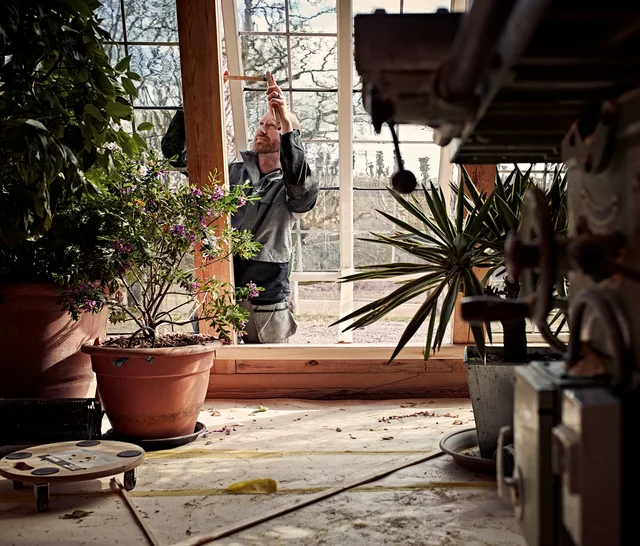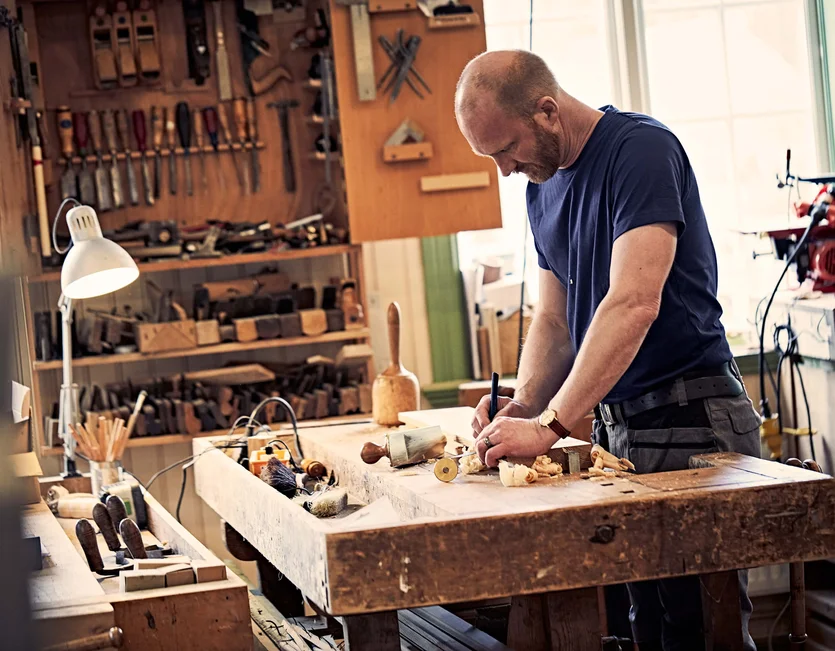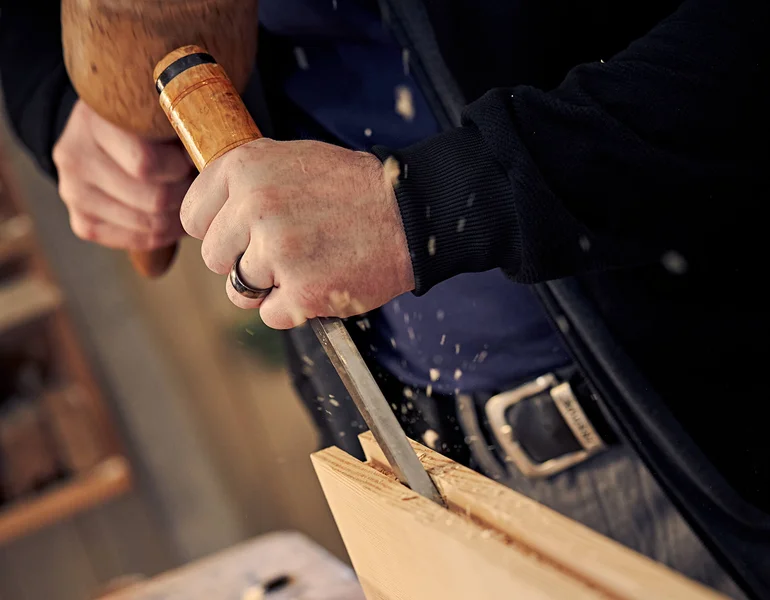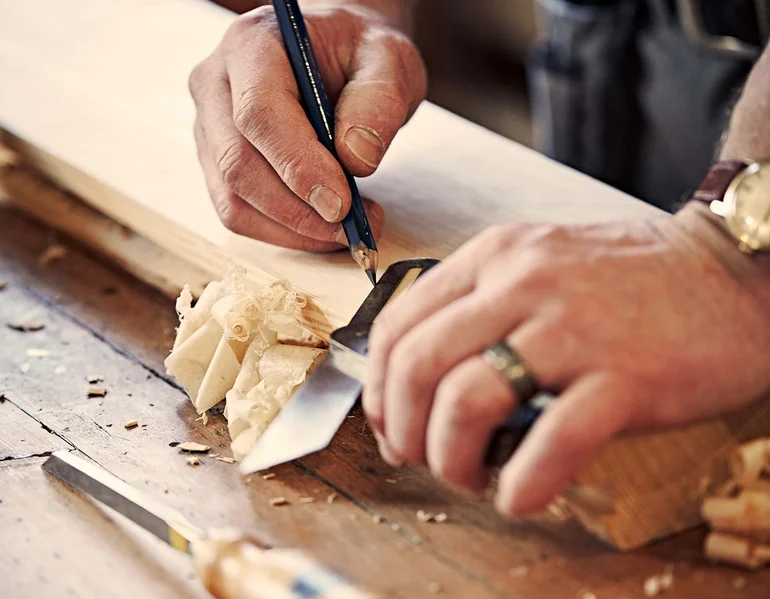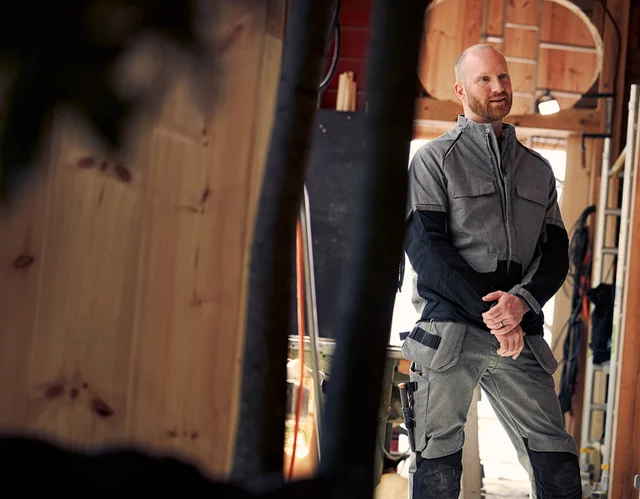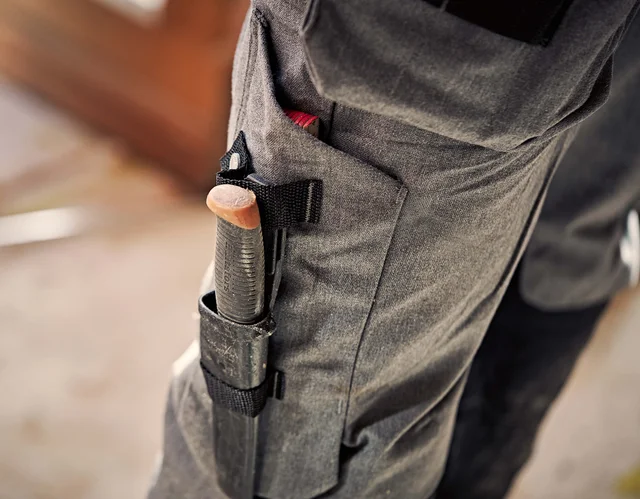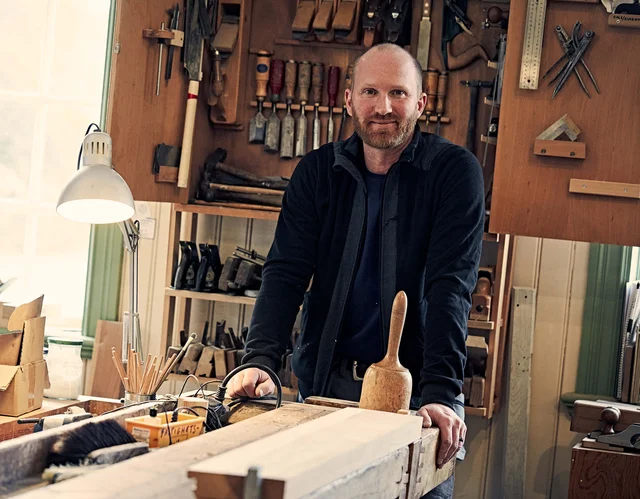Modern carpenters, Medieval techniques
A steady tapping escapes from the wood shop at the grounds of the historic Gunnebo House and Gardens near Gothenburg, Sweden, as the sun trickles through the centuries-old windows, onto work benches covered in saw dust and scattered tools. It is the sound of a mortise and tenon joint in the making, the old-fashioned way. When the carpenters at Gunnebo work their magic, they do it mostly using simple hand tools, architectural drawings from the 1700s and techniques dating back to Medieval times.
“Our job is to try to understand the intentions of the eighteenth and nineteenth century architects that designed this place, and what they wanted it to look like. A lot of times we have to make more or less educated guesses,” says Andreas Bergerson, carpenter at Gunnebo.
Craftsmen and detectives
To recreate the Orangery, the Gunnebo craftsmen of today rely on Günther’s interpretations of Carlberg’s original drawings, watercolours of the property from that time, historical research and information derived from archaeological digs to recreate the Orangery from the ground up. It is a long and arduous process that requires both high-level craftsmanship and a fair amount of detective work. Periodically, the small in-house team is assisted by craftsman students from Gothenburg University who flock to Gunnebo to learn traditional techniques that were long left for dead.
The construction of the Orangery is now eight years in the making but the craftsmen are not rushing it.
“We could just slap up a new building but we are doing it the more complicated way because we want as many students as possible to learn the old techniques and to see the craft from our point of view,” explains Andreas while inspecting one of the handmade windows from Germany that he has installed in the Orangery.
“This craft is part of our immaterial cultural heritage. These skills cannot be taught through books, they must be passed on through the hands of the craftsmen, from generation to generation.”
Sustainable craft and clothes
The meticulous reconstruction of the Orangery will ensure that once the building is finished, it will stand for a long time to come. Using quality materials and rigorous processes may be more costly upfront but will make the project more sustainable in the long run, which aligns well with Gunnebo’s ambitious environmental policy. Gunnebo is also strengthening its commitment to sustainability by providing the craftsmen and their students with workwear from Fristads’ Green collections. The garments in the Green collections have an Environmental Product Declaration, meaning that the environmental impact of all steps of the production has been thoroughly analysed and minimised.
“We have a high ambition to become sustainable on all levels of our operation but finding workwear that lives up to the goals of our environmental policy has always been a challenge,” says Andreas. “When I learned about Fristads Green, all the pieces fell into place. Choosing this collection was a natural next step for us.”
Getting close to the finish line
The grand opening of the Orangery is planned for 2022 and will be an important milestone in returning Gunnebo to its stately historic past. For Andreas, who was hired by Gunnebo in 2013 to facilitate the completion of the Orangery, the opening will be extra special.
“Reconstructing the Orangery is a long-time dream,” Andreas says, before putting up his tools and wrapping up another day at work.


